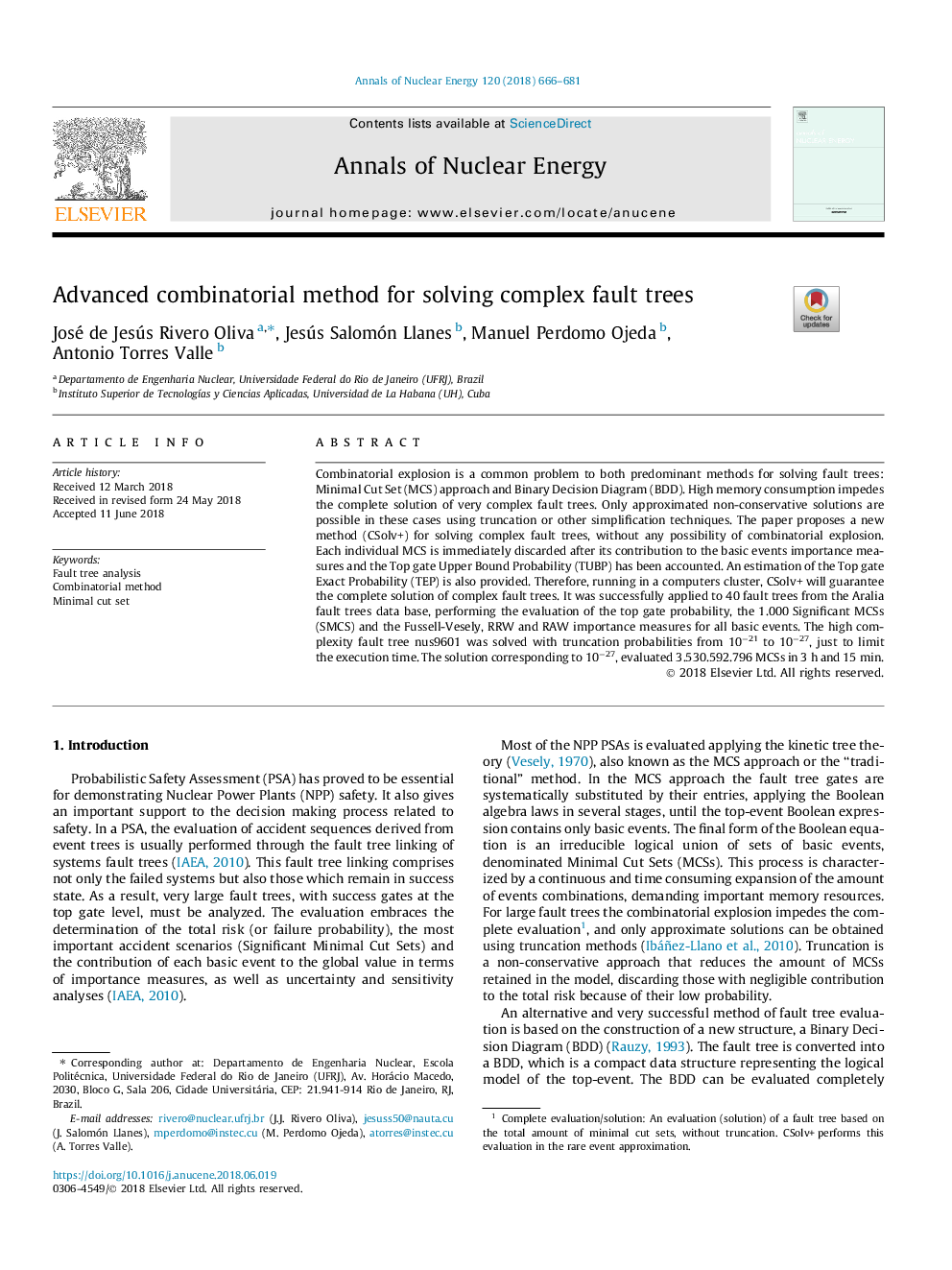| Article ID | Journal | Published Year | Pages | File Type |
|---|---|---|---|---|
| 8066877 | Annals of Nuclear Energy | 2018 | 16 Pages |
Abstract
Combinatorial explosion is a common problem to both predominant methods for solving fault trees: Minimal Cut Set (MCS) approach and Binary Decision Diagram (BDD). High memory consumption impedes the complete solution of very complex fault trees. Only approximated non-conservative solutions are possible in these cases using truncation or other simplification techniques. The paper proposes a new method (CSolv+) for solving complex fault trees, without any possibility of combinatorial explosion. Each individual MCS is immediately discarded after its contribution to the basic events importance measures and the Top gate Upper Bound Probability (TUBP) has been accounted. An estimation of the Top gate Exact Probability (TEP) is also provided. Therefore, running in a computers cluster, CSolv+â¯will guarantee the complete solution of complex fault trees. It was successfully applied to 40 fault trees from the Aralia fault trees data base, performing the evaluation of the top gate probability, the 1.000 Significant MCSs (SMCS) and the Fussell-Vesely, RRW and RAW importance measures for all basic events. The high complexity fault tree nus9601 was solved with truncation probabilities from 10â21 to 10â27, just to limit the execution time. The solution corresponding to 10â27, evaluated 3.530.592.796 MCSs in 3â¯h and 15â¯min.
Related Topics
Physical Sciences and Engineering
Energy
Energy Engineering and Power Technology
Authors
José de Jesús Rivero Oliva, Jesús Salomón Llanes, Manuel Perdomo Ojeda, Antonio Torres Valle,
